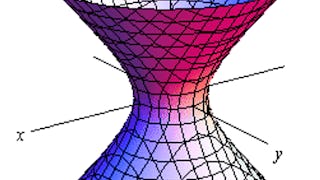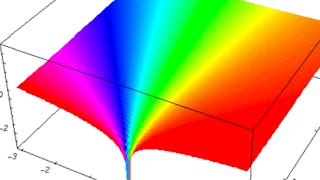Honors Algebra 2: Linear and Quadratic Equations is the first course of a high-level algebra course designed to deepen your mathematical thinking and prepare you for advanced study in math, science, and engineering. Whether you're a high school student looking to accelerate your progress or an adult learner brushing up on foundational skills, this course offers a rich, engaging experience aligned with the Common Core State Standards.



Honors Algebra 2: Linear and Quadratic Functions
This course is part of Honors Algebra 2 Specialization

Instructor: Joseph W. Cutrone, PhD
Top Instructor
Access provided by Bayero University - Kano
Skills you'll gain
Details to know

Add to your LinkedIn profile
11 assignments
June 2025
See how employees at top companies are mastering in-demand skills

Build your subject-matter expertise
- Learn new concepts from industry experts
- Gain a foundational understanding of a subject or tool
- Develop job-relevant skills with hands-on projects
- Earn a shareable career certificate

There are 3 modules in this course
Throughout this specialization, we will use functions to help visualize, analyze, and interpret the relationships between variables. In this module, we will start by exploring linear functions. A linear relationship between two variables occurs when changes in one variable correspond to proportional changes in the other. Many physical situations can be modeled using linear functions. We will see examples of how to create and interpret linear functions in the sections that follow.
What's included
5 videos6 readings4 assignments
We will now add to our library of functions by exploring quadratic functions. Adding an extra term with x-squared to a linear function creates a quadratic function. The graphs of these functions are parabolas, which can be used to model things like the path of a projectile or the curved surface of a satellite dish. In this module, we will examine the key parts of the graphs of quadratic functions, and explore strategies to fit quadratic functions to real-world data.
What's included
2 videos4 readings4 assignments
We will wrap up our first course by combining our previous knowledge of systems of equations and inequalities with quadratic functions. Adding squared terms to systems of equations and inequalities, we can describe more elaborate regions in the plane. This allows us to model a wider range of scenarios.
What's included
2 videos2 readings3 assignments
Earn a career certificate
Add this credential to your LinkedIn profile, resume, or CV. Share it on social media and in your performance review.
Instructor

Offered by
Why people choose Coursera for their career




Explore more from Math and Logic

Johns Hopkins University

Johns Hopkins University

Johns Hopkins University

The University of Sydney

